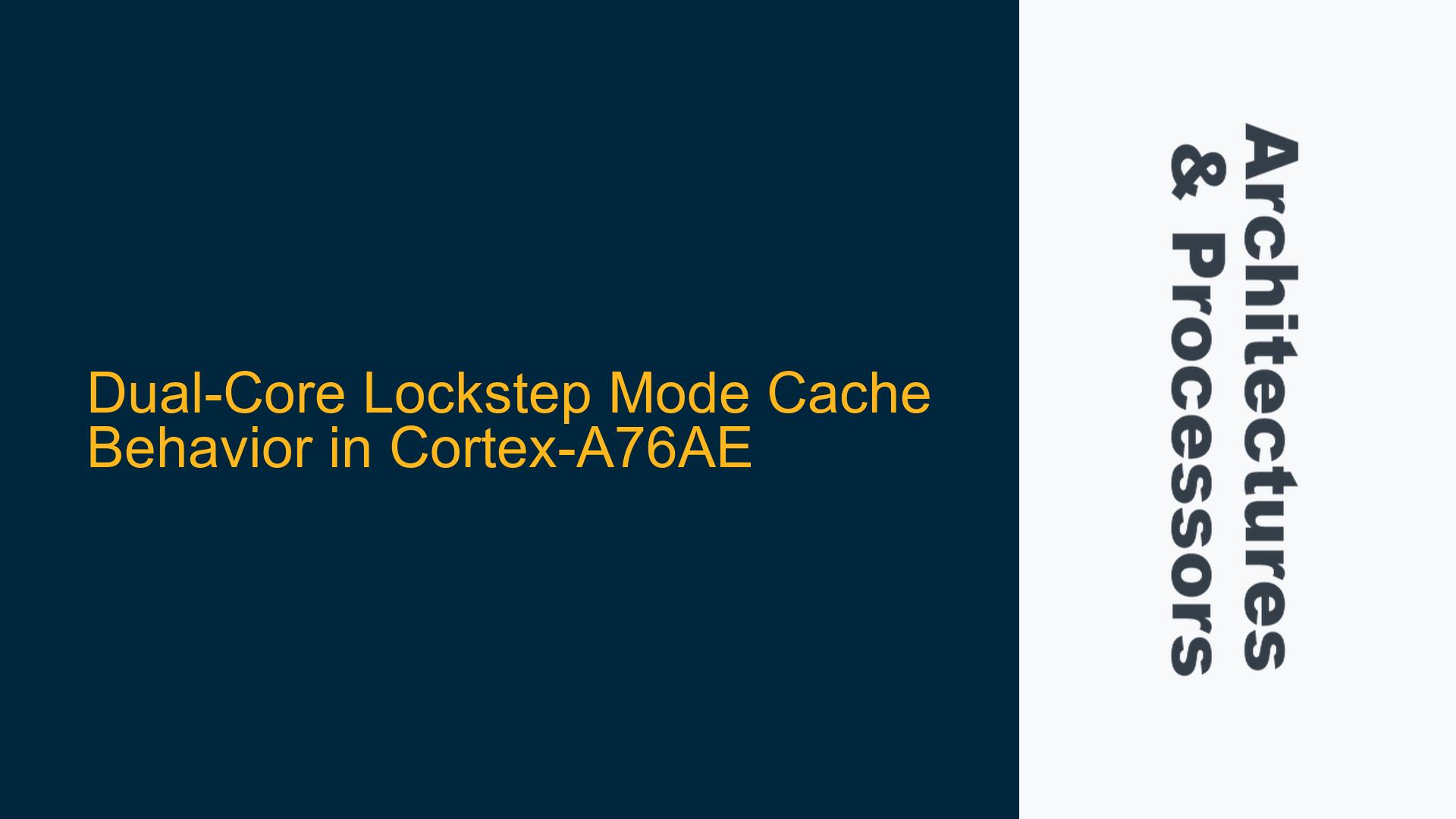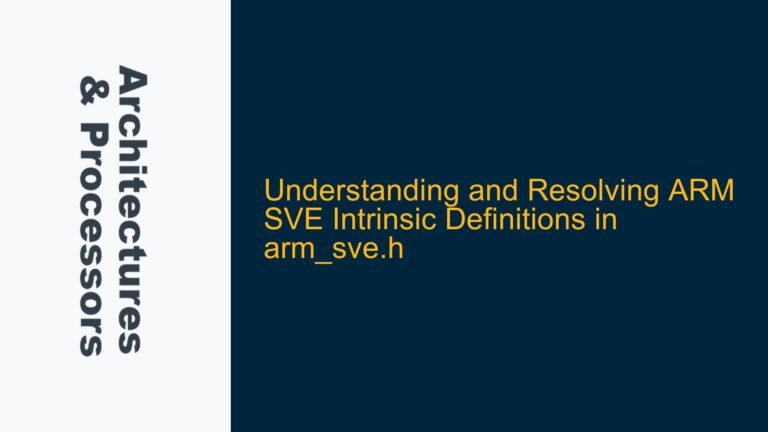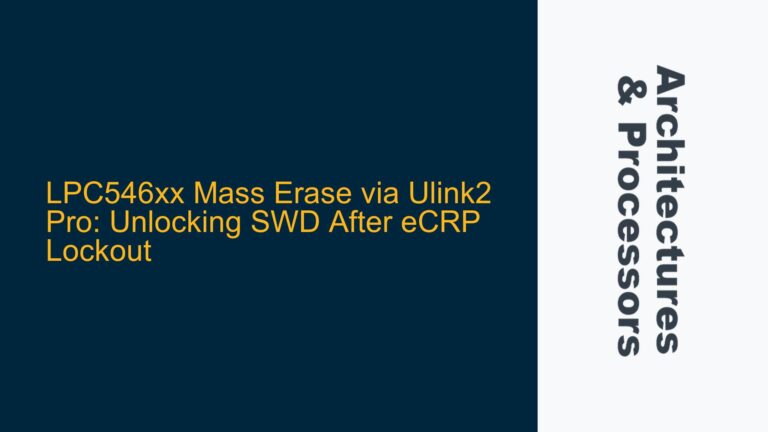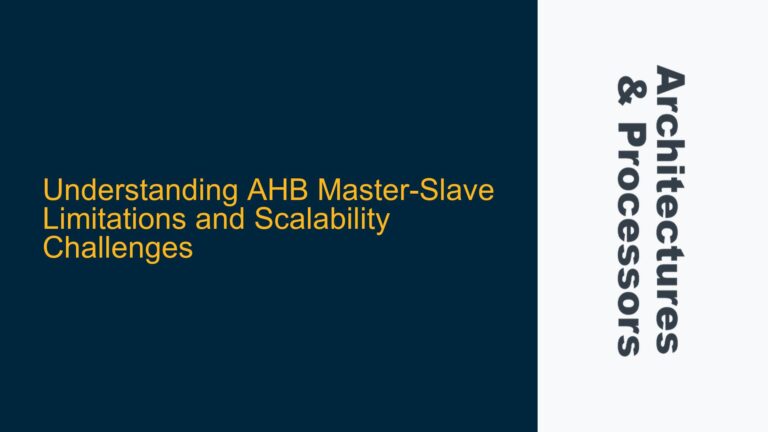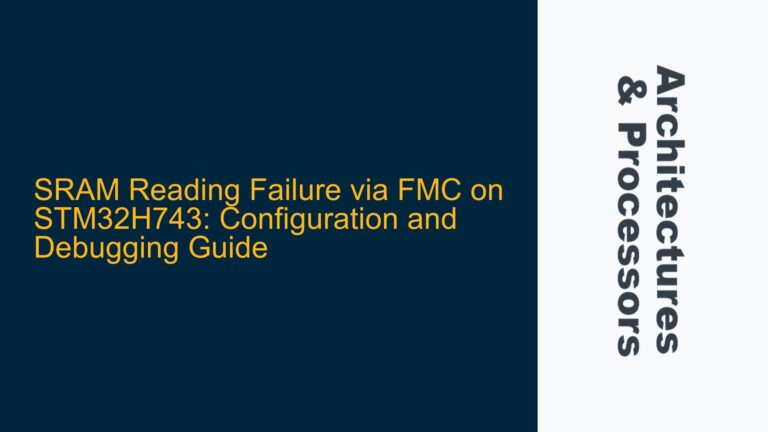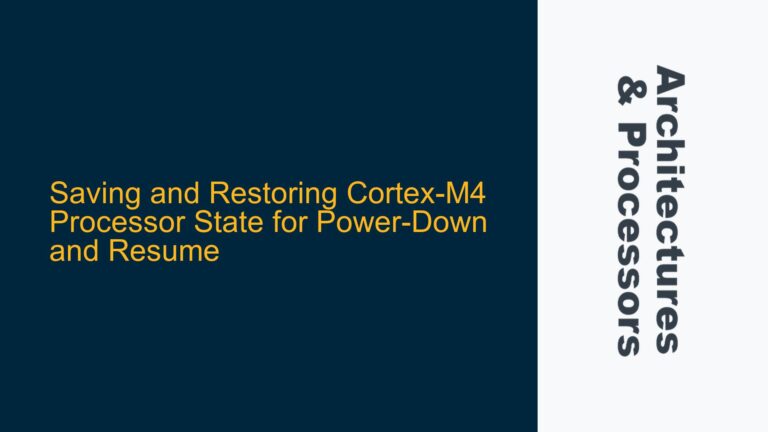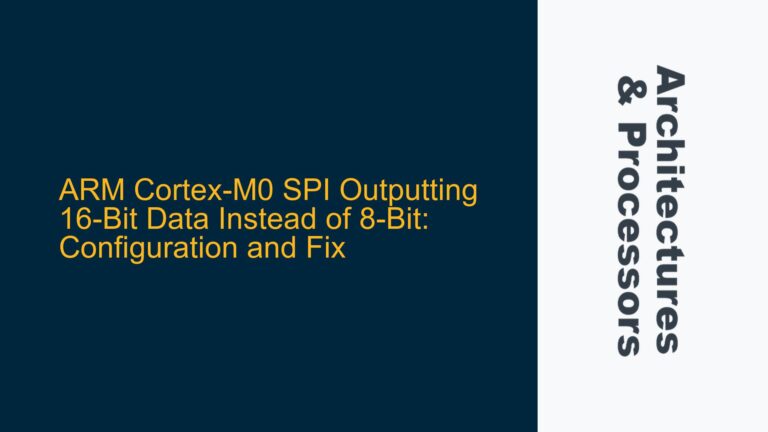ARM Cortex-A76AE Dual-Core Lockstep Mode and Cache System Interactions
The ARM Cortex-A76AE processor, designed for safety-critical applications, features a Dual-Core Lockstep (DCLS) mode that enhances fault detection by running two cores in perfect synchronization. When DCLS is activated, the two cores execute the same instructions simultaneously, and their outputs are compared to detect discrepancies caused by transient or permanent faults. This mode is particularly useful in automotive, industrial, and aerospace applications where functional safety standards such as ISO 26262 and IEC 61508 are mandatory.
However, the interaction between the cache system and DCLS mode introduces several complexities. The cache hierarchy in the Cortex-A76AE includes L1 instruction and data caches for each core, as well as a shared L2 cache. When DCLS is enabled, the two cores must maintain identical states, including their cache contents. This requirement raises questions about cache initialization, coherency, and management during DCLS activation. Additionally, the restriction that DCLS can only be enabled during boot time adds another layer of complexity, as runtime activation would require careful handling of cache and core states.
Understanding how the cache system operates in DCLS mode is critical for ensuring reliable and deterministic behavior in safety-critical systems. This post delves into the cache behavior during DCLS activation, explores the reasons behind the boot-time restriction, and provides detailed guidance on cache management strategies.
Cache Initialization and Coherency in Dual-Core Lockstep Mode
When DCLS is activated on the Cortex-A76AE, both cores must start from a known and identical state. This requirement extends to the cache system, which plays a crucial role in maintaining performance and data consistency. The L1 and L2 caches must be carefully managed to ensure that both cores operate on the same data and instructions throughout their execution.
The L1 caches, being private to each core, present a unique challenge in DCLS mode. Since the two cores must execute in lockstep, their L1 caches must contain identical data and instructions at all times. This necessitates a cache initialization process that ensures both L1 caches are cleared or populated with the same contents before DCLS activation. Failure to do so could result in divergent execution paths, undermining the fault-detection capabilities of DCLS.
The shared L2 cache, on the other hand, simplifies some aspects of cache management. Since both cores access the same L2 cache, there is no need to synchronize its contents between the cores. However, the L2 cache must still be initialized to a known state to ensure deterministic behavior. This initialization typically involves invalidating the L2 cache or preloading it with the required data and instructions.
Cache coherency is another critical consideration in DCLS mode. The cache coherency protocol must ensure that both cores see a consistent view of memory, even when accessing shared data structures. This is particularly important in multi-core systems where other cores or devices may modify memory locations. The Cortex-A76AE employs a hardware-based cache coherency mechanism, such as the ARM ACE (AXI Coherency Extensions) protocol, to maintain coherency across the L1 and L2 caches. However, software interventions, such as explicit cache maintenance operations, may still be required to ensure coherency during DCLS activation.
The boot-time restriction for DCLS activation is closely tied to cache initialization and coherency. Enabling DCLS at runtime would require freezing the cores, synchronizing their states, and initializing their caches to ensure identical execution paths. This process is complex and error-prone, making boot-time activation the preferred approach. Additionally, runtime activation could introduce timing uncertainties, which are undesirable in safety-critical systems.
Implementing Cache Management Strategies for Dual-Core Lockstep Mode
To ensure reliable operation in DCLS mode, developers must implement robust cache management strategies that address initialization, coherency, and synchronization. These strategies involve a combination of hardware features and software interventions to maintain cache consistency and deterministic behavior.
The first step in cache management is to initialize the L1 and L2 caches to a known state before activating DCLS. This typically involves invalidating the caches to clear any stale or inconsistent data. The Cortex-A76AE provides cache maintenance operations, such as the Data Cache Clean and Invalidate (DCCISW) and Instruction Cache Invalidate (ICIALLU) instructions, which can be used to perform these operations. Developers should ensure that these operations are executed on both cores to maintain cache consistency.
Once the caches are initialized, the next step is to preload them with the required data and instructions. This can be achieved using cache preload instructions or by accessing the data and instructions in a controlled manner before enabling DCLS. Preloading the caches ensures that both cores start execution with identical cache contents, reducing the risk of divergent execution paths.
Cache coherency must be maintained throughout the execution of the system. The Cortex-A76AE’s hardware-based coherency mechanisms, such as the ACE protocol, handle most coherency requirements automatically. However, developers must still be aware of potential coherency issues, particularly when accessing shared data structures. Explicit cache maintenance operations, such as Data Memory Barriers (DMB) and Data Synchronization Barriers (DSB), can be used to enforce coherency at critical points in the code.
The boot-time restriction for DCLS activation simplifies cache management by ensuring that the cores and caches are in a known state before execution begins. However, developers must still carefully design their boot process to handle cache initialization and preloading. This may involve modifying the bootloader or early startup code to perform the necessary cache operations.
In summary, the cache system in the Cortex-A76AE plays a critical role in ensuring reliable operation in Dual-Core Lockstep mode. Developers must implement robust cache management strategies that address initialization, coherency, and synchronization to maintain deterministic behavior and fault-detection capabilities. By leveraging the Cortex-A76AE’s hardware features and following best practices for cache management, developers can achieve the high levels of reliability and safety required in critical applications.
